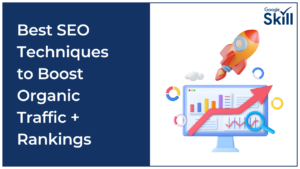
Certainly! Here’s the best technical SEO checklist for 2023:
- Mobile-Friendly Design:
- Ensure your website is responsive and mobile-friendly.
- Use a mobile-friendly testing tool to verify the mobile compatibility.
- Page Speed Optimization:
- Optimize your website’s loading speed.
- Compress images, minify CSS and JavaScript files.
- Use caching techniques and a content delivery network (CDN) to improve speed.
- SSL and Security:
- Implement SSL (Secure Sockets Layer) on your website to ensure secure connections.
- Regularly update your CMS, plugins, and themes to protect against security vulnerabilities.
- XML Sitemap:
- Create an XML sitemap and submit it to search engines to ensure proper indexing.
- Ensure it includes all relevant pages and is regularly updated.
- Robots.txt File:
- Review your robots.txt file to ensure search engine crawlers can access important content.
- Exclude any unnecessary pages or directories from being indexed.
- Structured Data Markup:
- Implement structured data markup (Schema.org) to provide search engines with additional context about your content.
- Use tools like Google’s Structured Data Testing Tool to validate your markup.
- Canonical URLs:
- Implement canonical URLs to avoid duplicate content issues.
- Use rel=”canonical” tags or 301 redirects to consolidate similar pages.
- URL Structure:
- Use descriptive and SEO-friendly URLs.
- Avoid dynamic parameters and use hyphens to separate words.
- Broken Links:
- Regularly check for broken links on your website and fix them promptly.
- Use tools like Screaming Frog or Google Search Console to identify broken links.
- Mobile-First Indexing:
- Ensure your website is optimized for mobile-first indexing.
- Check that your mobile and desktop versions have equivalent content and metadata.
- User Experience (UX):
- Improve user experience by optimizing navigation, reducing bounce rates, and enhancing readability.
- Focus on user engagement metrics like time on page and conversion rates.
- Site Architecture:
- Organize your website’s structure with a logical hierarchy.
- Use breadcrumb navigation to aid user navigation and search engines’ understanding.
- AMP (Accelerated Mobile Pages):
- Consider implementing AMP to provide faster-loading versions of your web pages for mobile users.
- 404 Error Handling:
- Customize your 404 error page to help users navigate back to relevant content.
- Monitor 404 errors and fix broken links or redirect them to relevant pages.
- Social Media Integration:
- Integrate social media sharing buttons to encourage content sharing.
- Optimize meta tags to ensure attractive and accurate social media previews.
Remember, SEO is an ongoing process, and it’s important to stay updated with the latest industry trends and search engine algorithm changes. Regularly monitor your website’s performance, analyze data, and make necessary adjustments to improve your technical SEO efforts.




[…] Improving your website’s technical SEO. This includes things like making sure your website is mobile-friendly, has a fast loading speed, and is easy to navigate. You can use a tool like Google Search Console to identify and fix any technical SEO issues on your website. […]